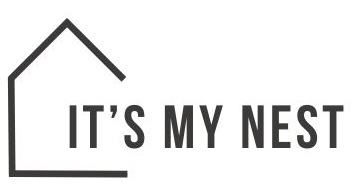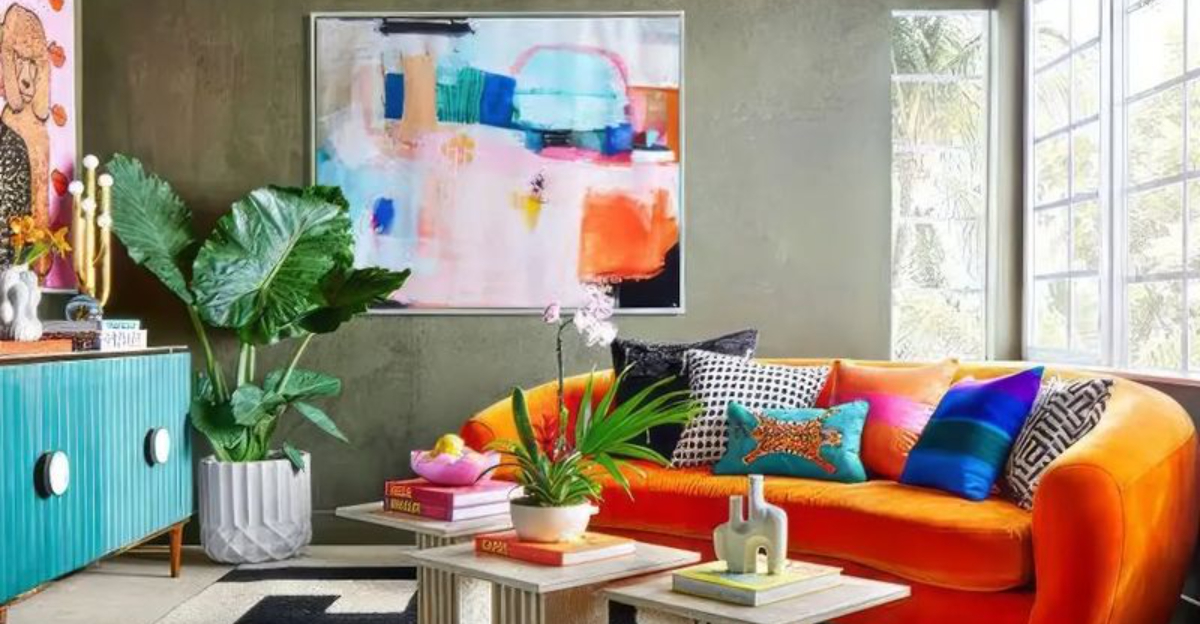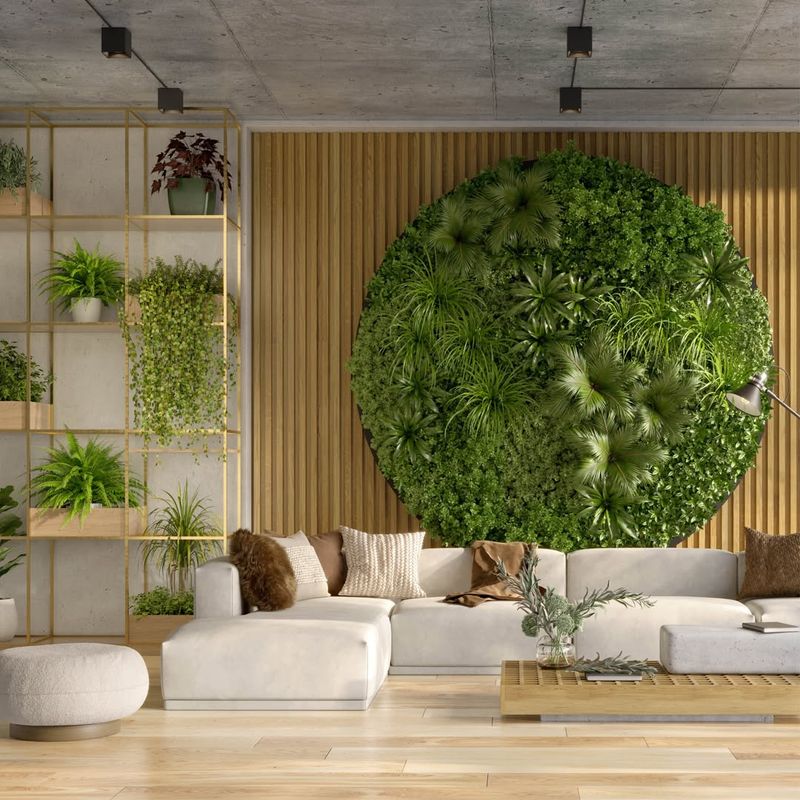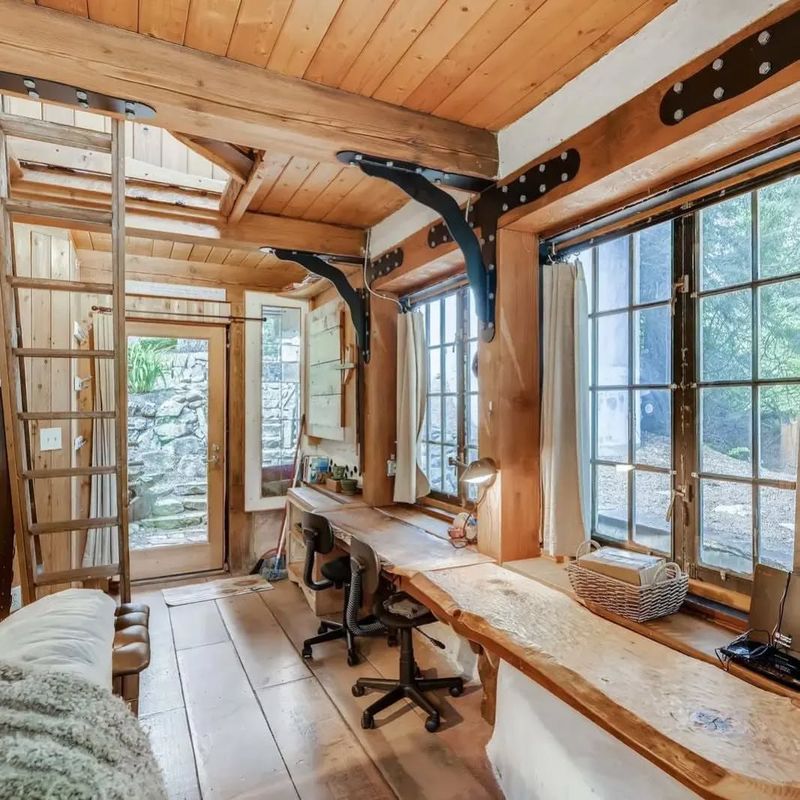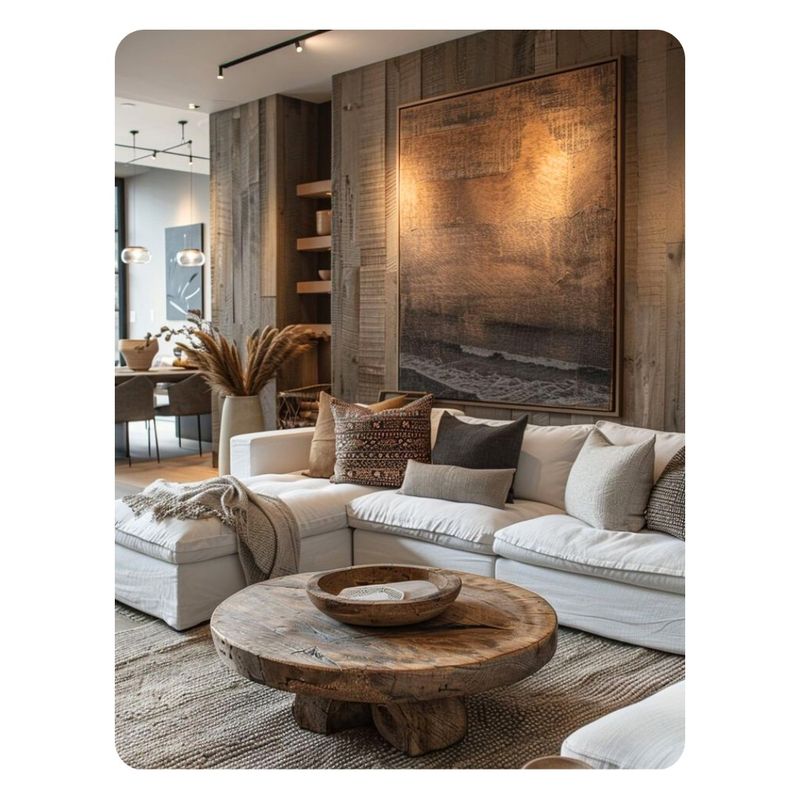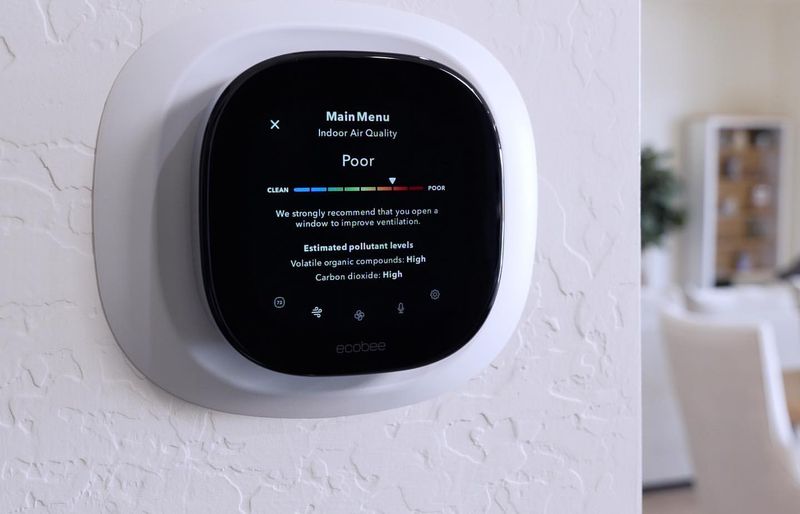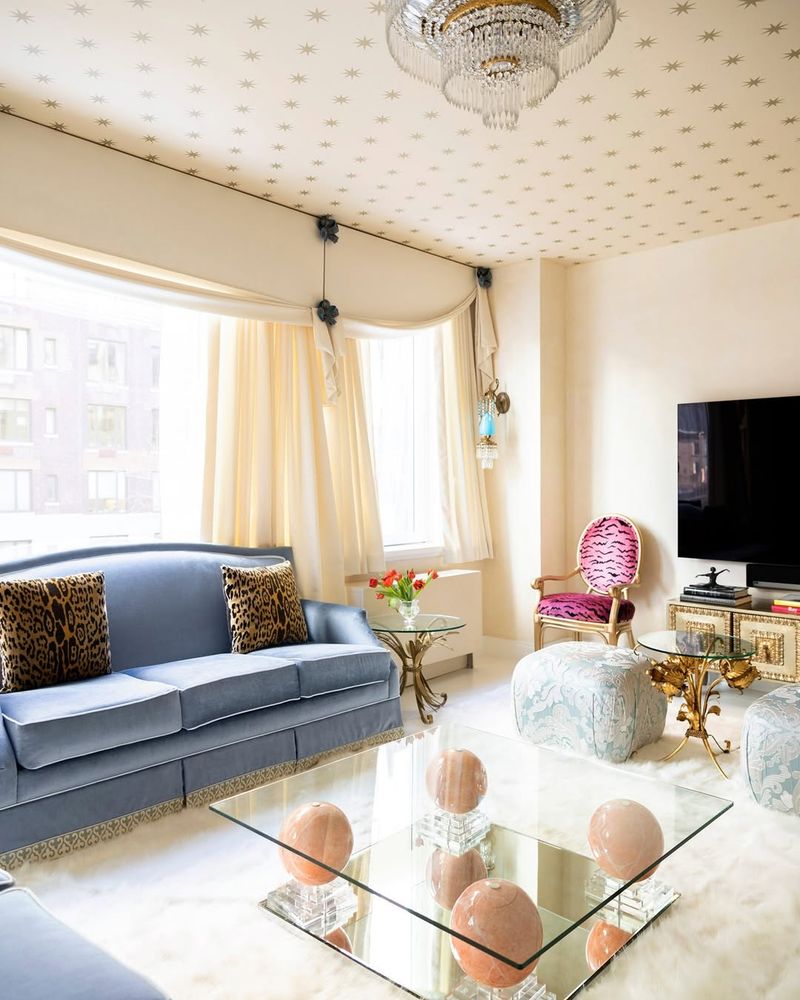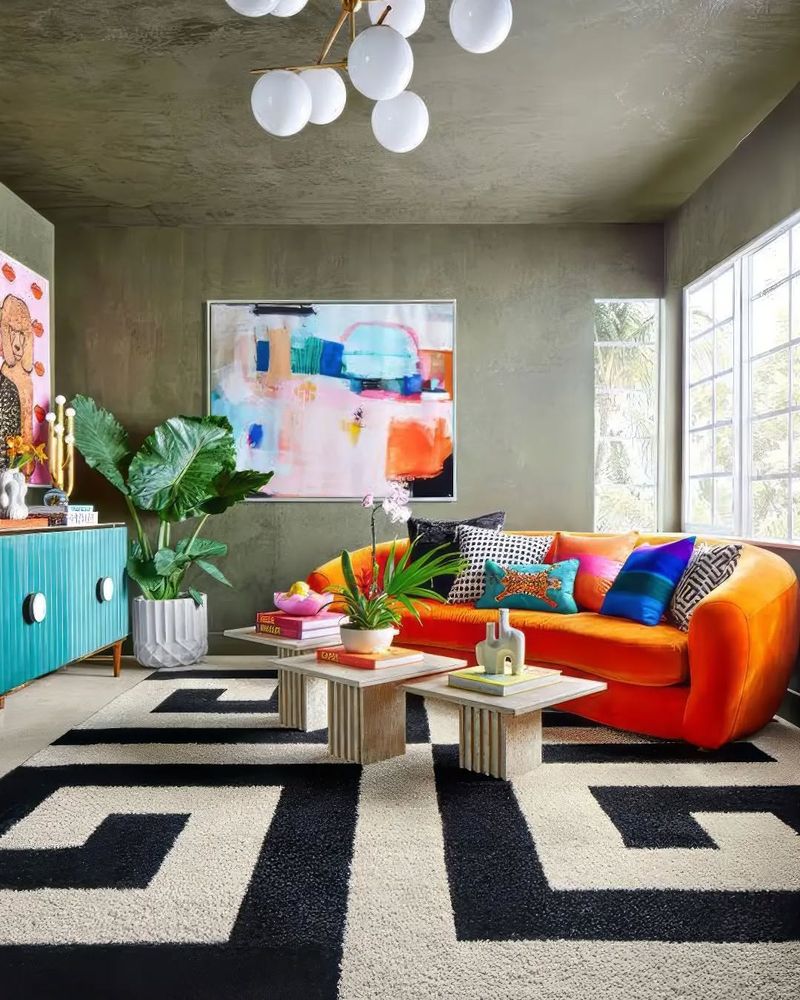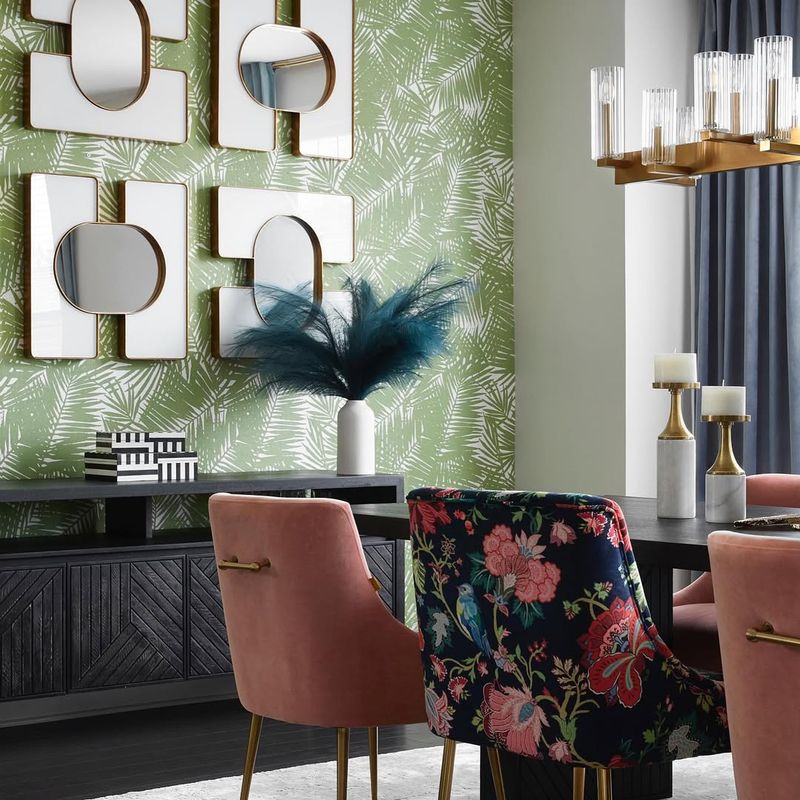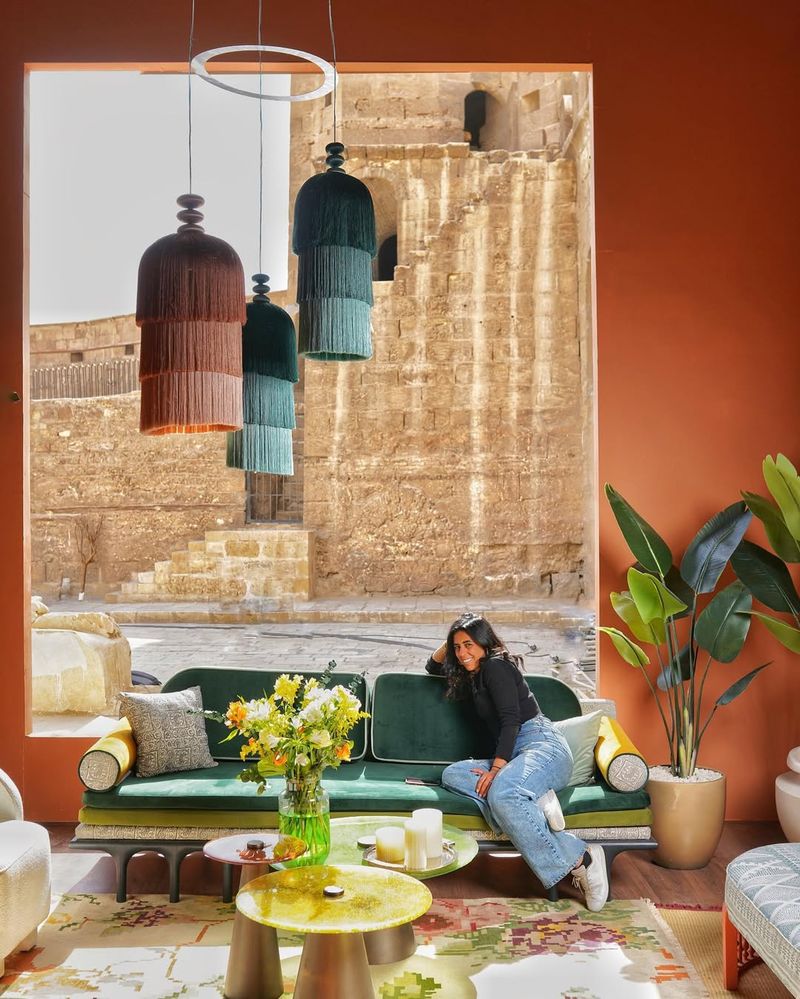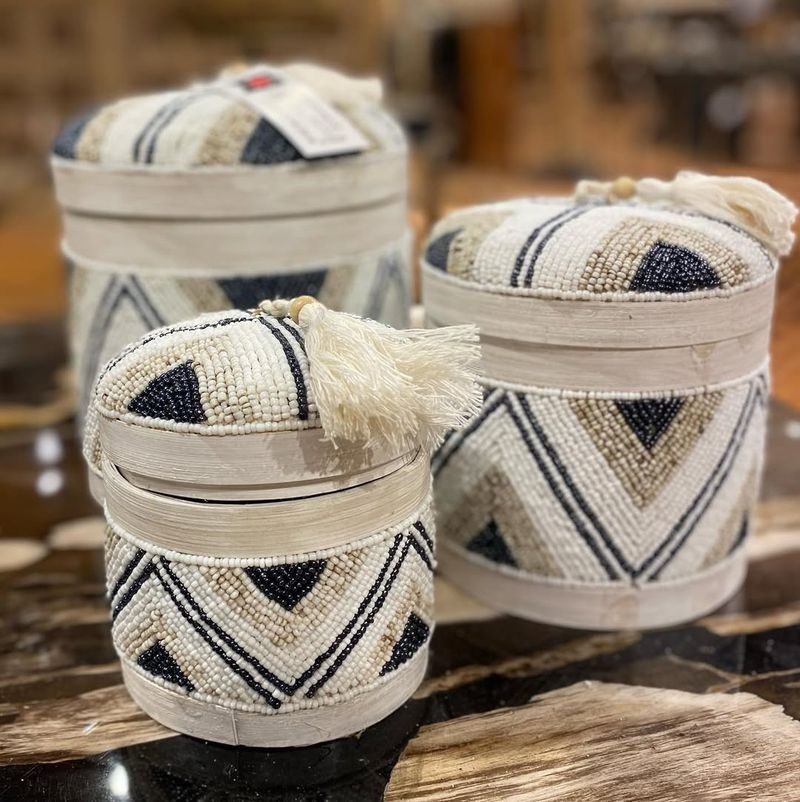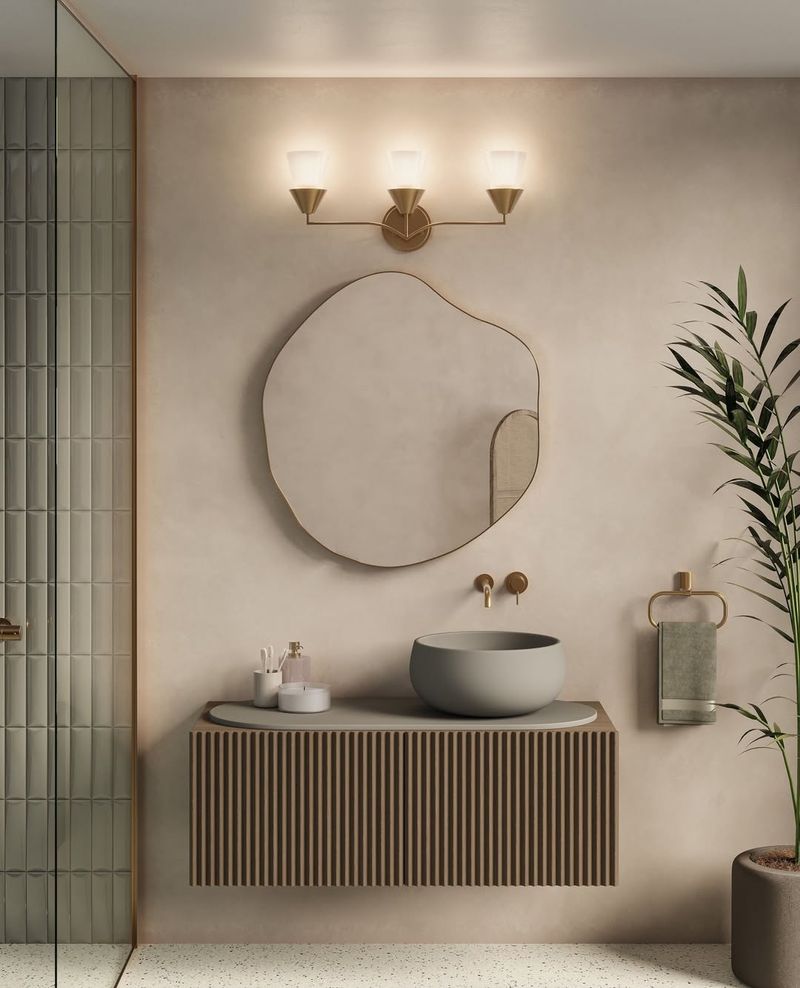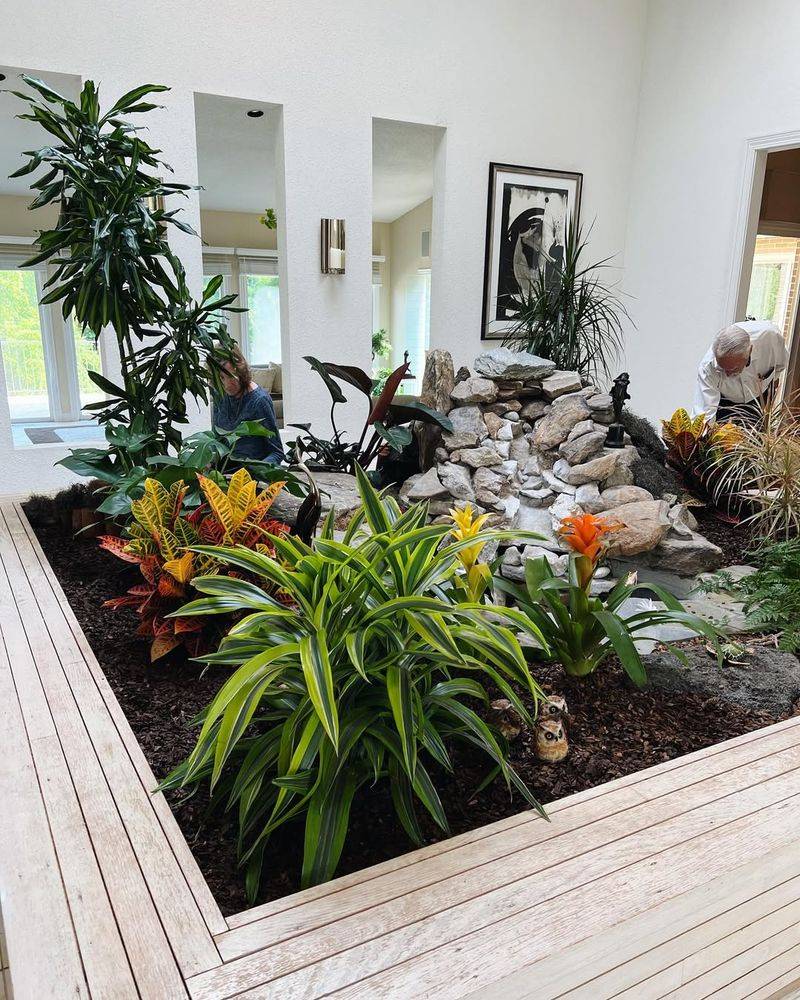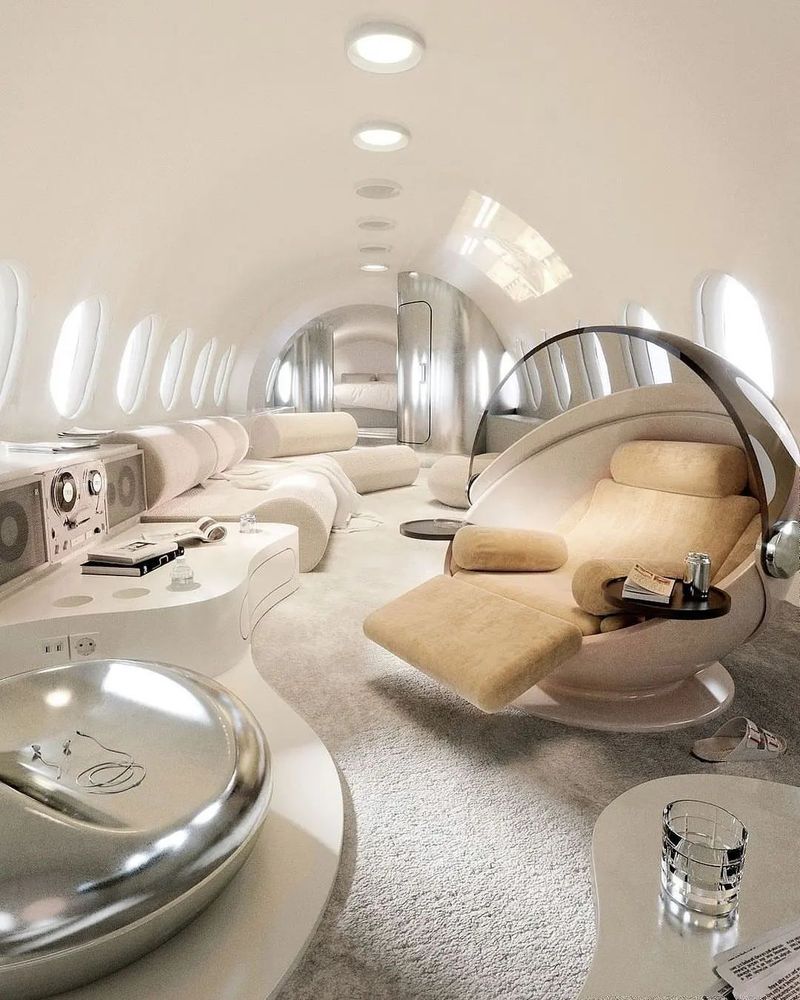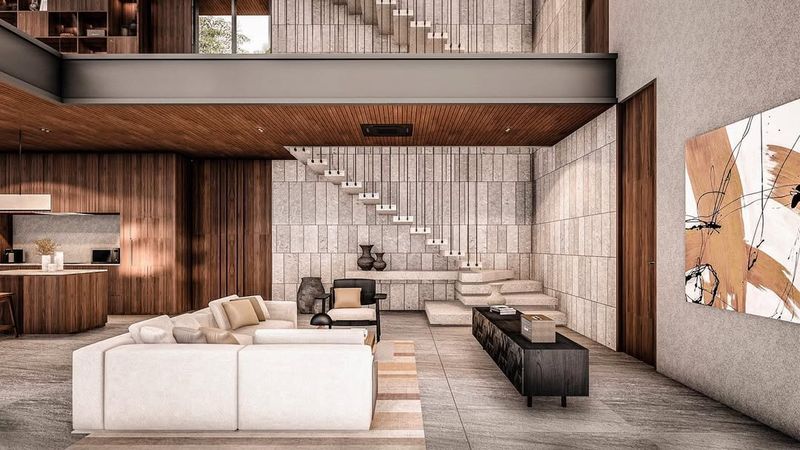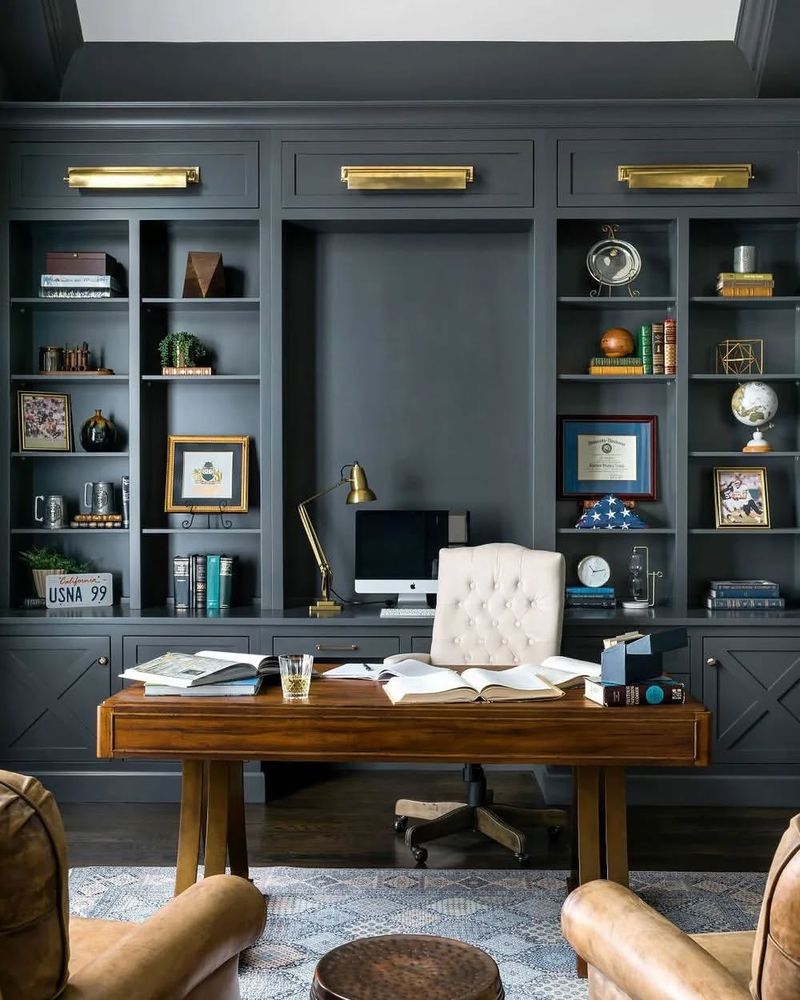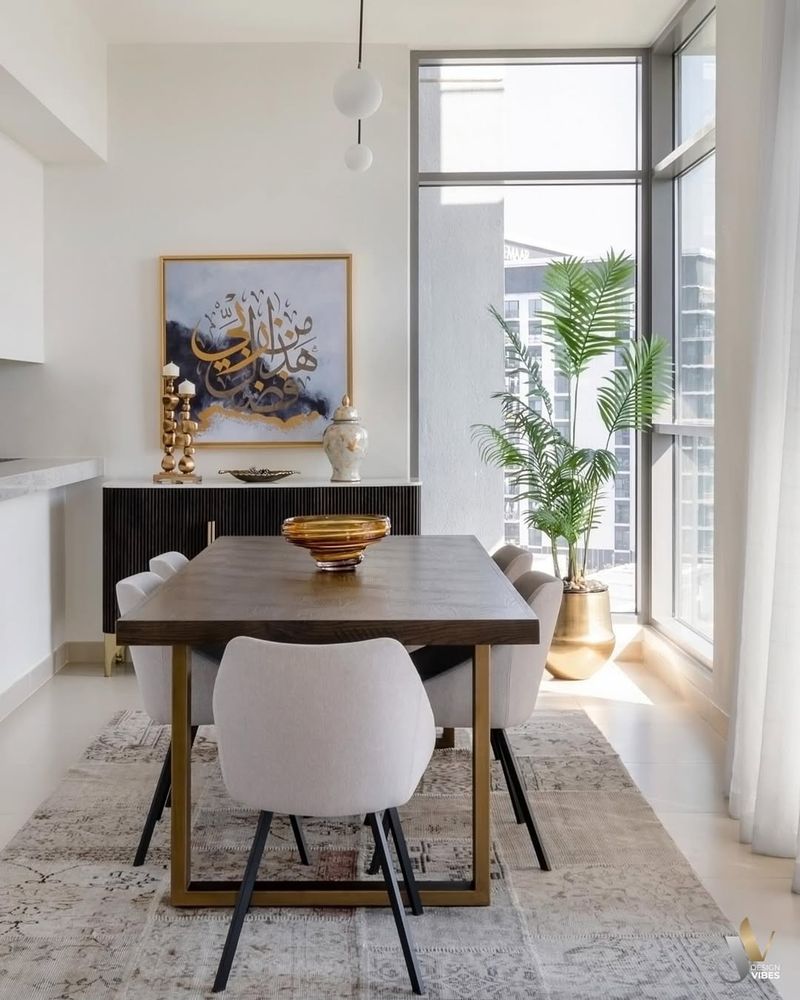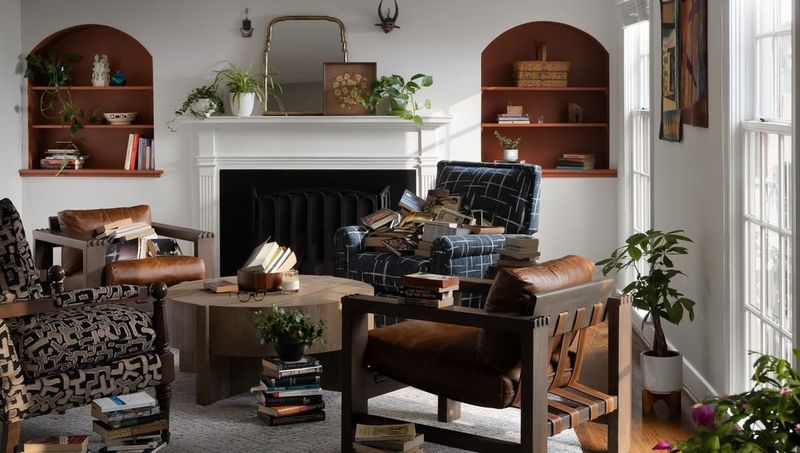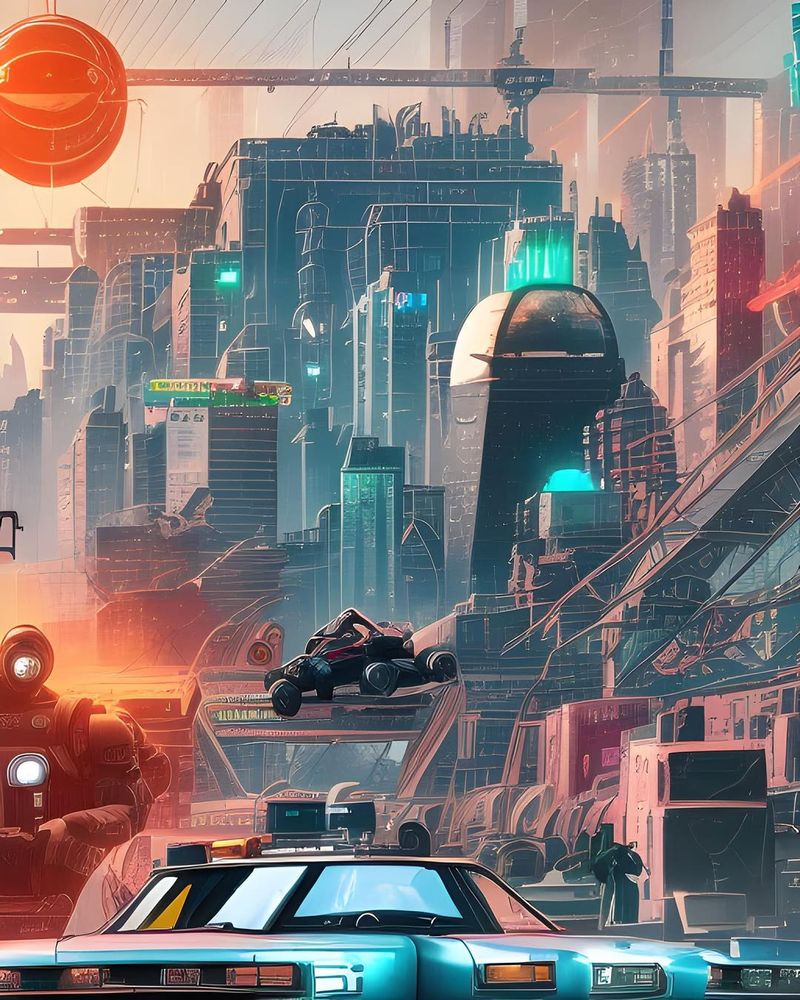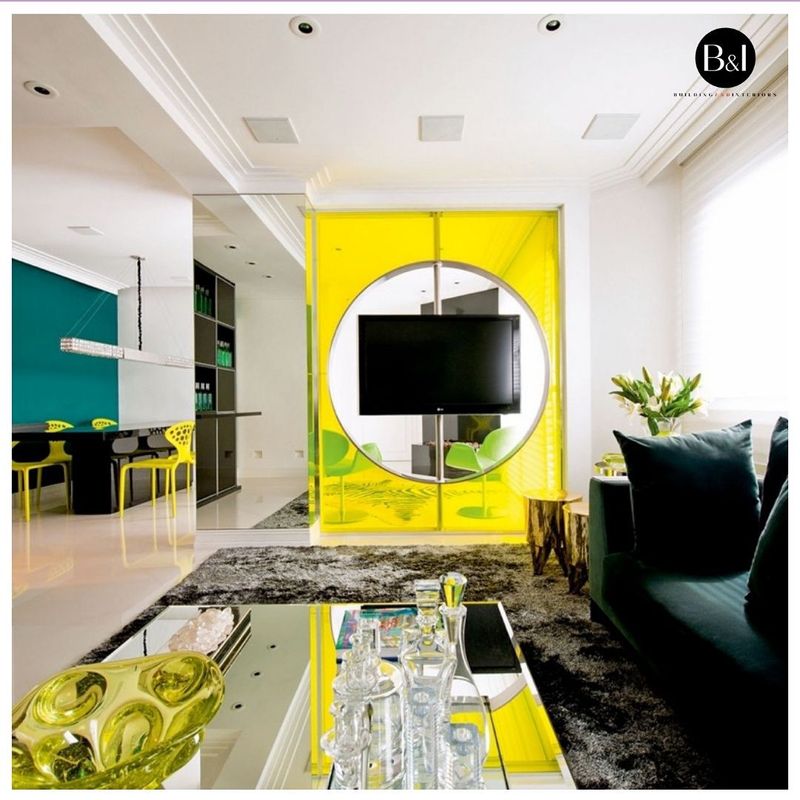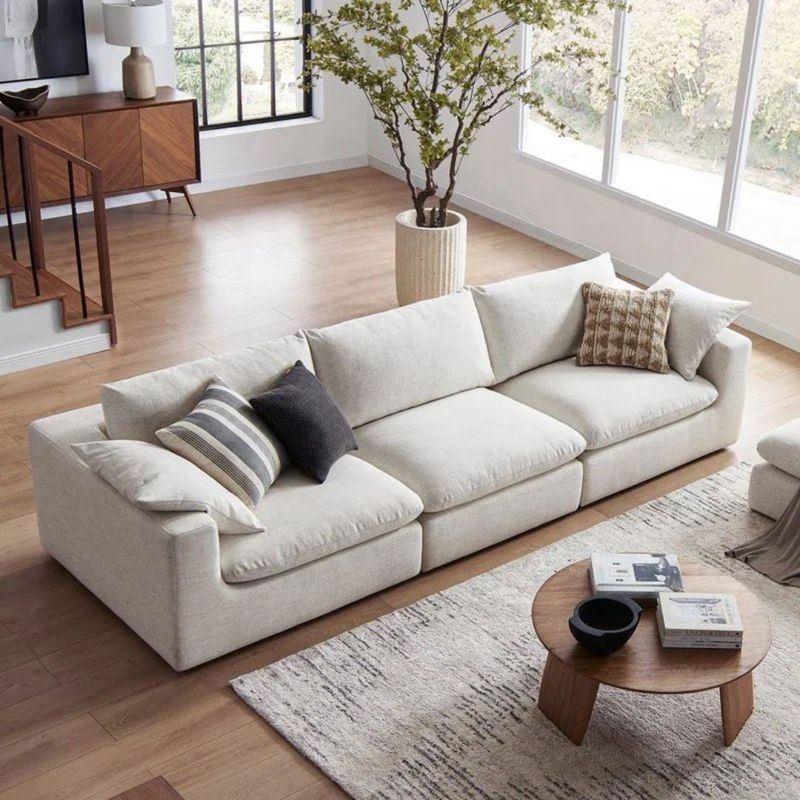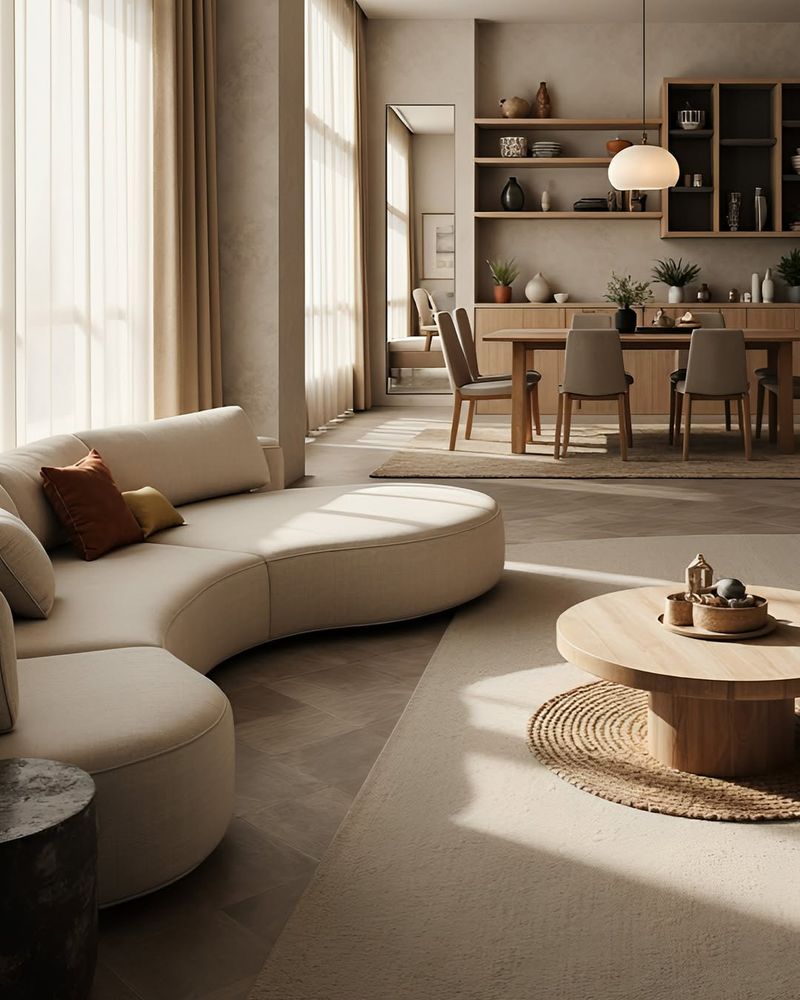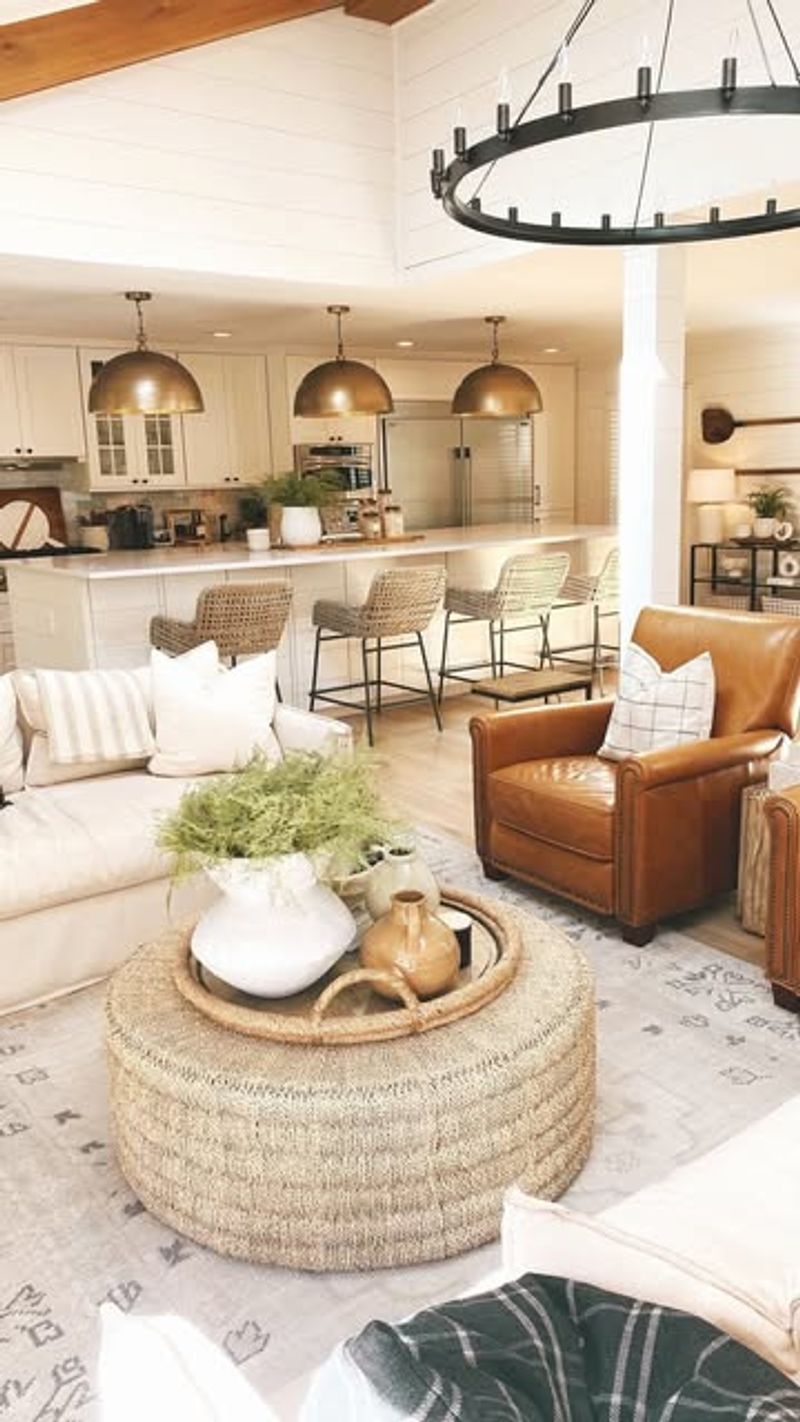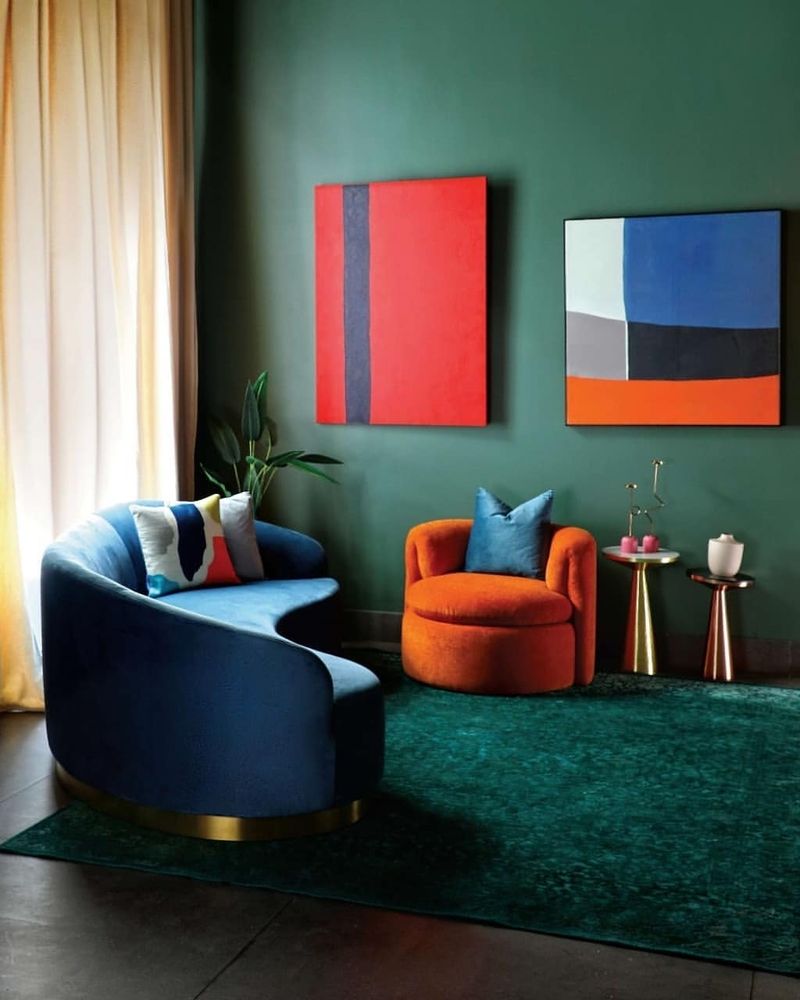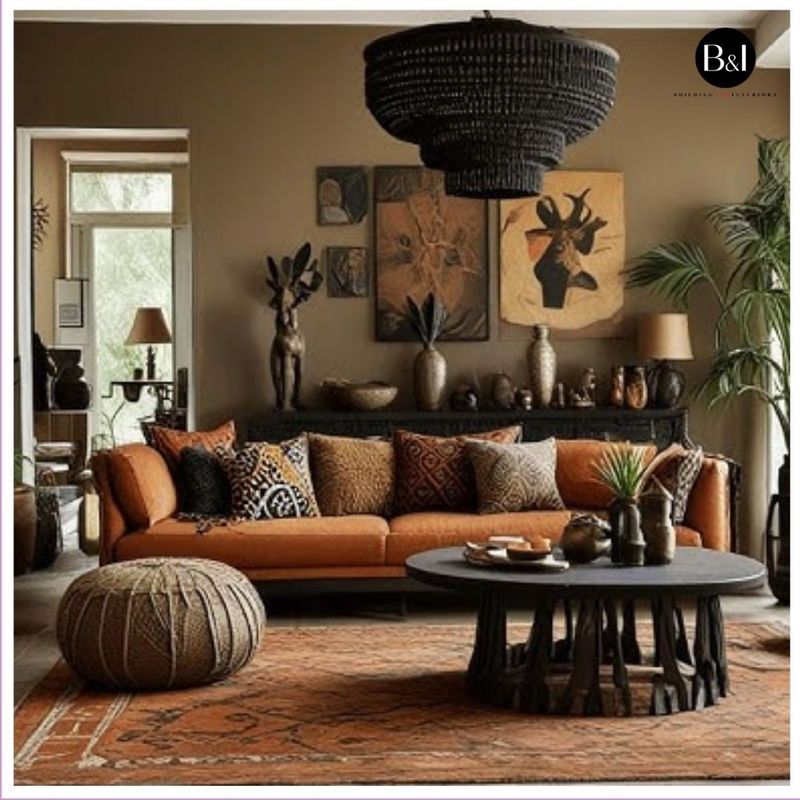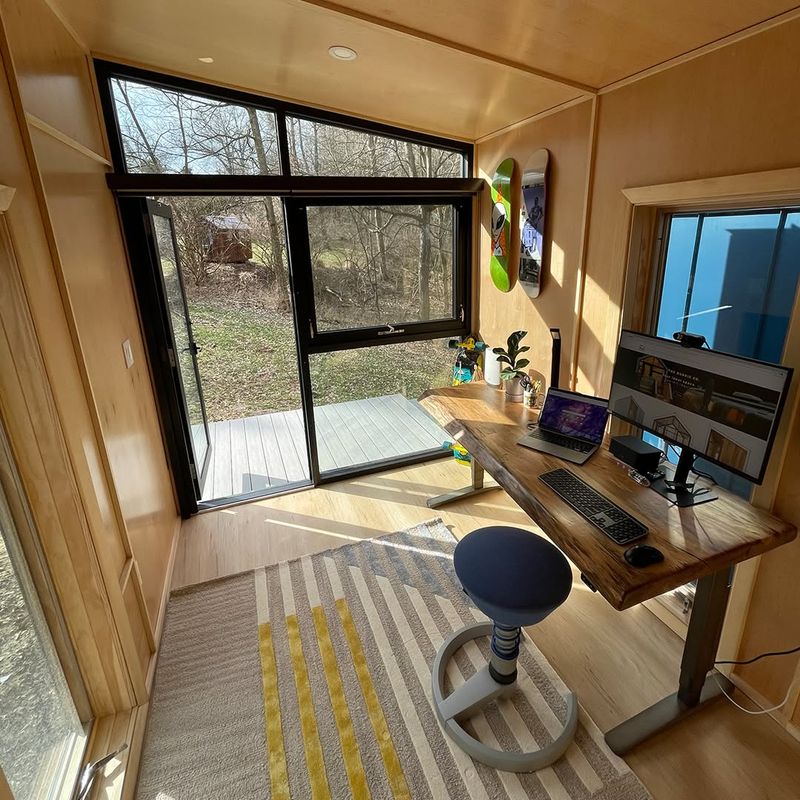In the ever-evolving world of design, staying updated with the latest trends is crucial for anyone involved in creative fields. These emerging design trends not only shape the aesthetics of our everyday lives but also influence how we interact with the world around us.
From innovative materials to groundbreaking techniques, these trends are redefining the boundaries of design.
Join me as we explore 24 exciting design trends that are capturing the imagination of designers and enthusiasts alike. Each trend offers a unique perspective and an opportunity to see the world through a new lens.
1. Biophilic Design
Have you ever walked into a space and immediately felt calm and refreshed? That’s the magic of biophilic design at work. This trend incorporates natural elements like plants, natural light, and organic materials into interior spaces.
Imagine a room filled with lush greenery, the soft rustle of leaves under a gentle breeze, and the warmth of sunlight streaming through large windows. Such environments foster well-being and reduce stress, making them perfect for both homes and offices.
Consider integrating vertical gardens or aquariums for a vibrant, living touch.
2. Sustainable Materials
Sustainability is no longer a choice; it’s a necessity. Using sustainable materials in design not only benefits the planet but also adds a unique character to your creations.
Picture furniture crafted from reclaimed wood or recycled plastic, each piece telling its own story. Such designs are not only environmentally friendly but also aesthetically pleasing, offering a blend of tradition and innovation.
Explore materials like bamboo or cork for renewable options that bring warmth and texture into any design project.
3. Minimalism with a Twist
Simplicity meets creativity in the new wave of minimalism. While traditional minimalism focuses on decluttering, this twist incorporates bold accent pieces to create striking contrasts.
Imagine a serene white room with a single vibrant art piece or a unique piece of furniture that commands attention. This approach injects personality without overwhelming the senses, maintaining harmony.
Try adding a statement piece in a neutral setting to enliven and energize your space without sacrificing the minimalist ethos.
4. Smart Technology Integration
Technology continues to shape our lives, and design is no exception. Integrating smart technology into your spaces enhances convenience and efficiency.
Visualize a home where lights dim on command, climate adjusts to your preferences, and music follows you from room to room. These smart solutions not only offer luxury but also improve energy efficiency.
Consider incorporating voice-activated assistants and automated systems to transform your living space into a futuristic haven.
5. Vintage Revival
In a world moving forward, there’s a comforting charm in looking back. Vintage revival brings the elegance of past eras into modern spaces.
Think of a room adorned with art deco furniture, retro patterns, and nostalgic decor items. These elements evoke a sense of history and character while blending seamlessly with contemporary design.
To refresh your space, mix vintage pieces with modern elements, creating a timeless aesthetic that celebrates the best of both worlds.
6. Bold Patterns
Patterns are making a comeback in a big way, adding energy and personality to any space. Bold geometric and abstract patterns can transform a mundane room into a lively masterpiece.
Imagine walls adorned with striking designs or textiles covered in vibrant motifs. These patterns can act as focal points, drawing the eye and sparking conversation.
Don’t be afraid to experiment with bold patterns on accent walls or in upholstery to inject life and creativity into your interiors.
7. Eclectic Fusion
Why limit yourself to one style when you can embrace them all? Eclectic fusion celebrates diversity by blending various styles, colors, and textures.
Picture a space where Eastern motifs meet Western minimalism, and traditional artifacts coexist with modern art. The result is a vibrant tapestry of creativity and culture.
For a unique look, mix and match elements from different eras and regions, crafting a personal statement that reflects your individuality.
8. Emotional Design Elements
Emotional design elements focus on creating spaces that resonate on a personal level, evoking feelings and memories. This trend emphasizes the use of textures, colors, and bespoke items that foster emotional connections, making environments more than just functional spaces.
By prioritizing how a space makes occupants feel, designers create personalized experiences that enhance well-being and satisfaction. This approach requires a deep understanding of human emotions and the psychological impact of design, leading to spaces that are both beautiful and meaningful.
9. Artisanal Craftsmanship
In an era of mass production, there’s something truly special about artisanal craftsmanship. Handmade items carry a personal touch and a story that machines can’t replicate.
Consider a beautifully hand-carved wooden table or a handwoven tapestry. These pieces infuse spaces with authenticity and charm, often becoming conversation starters.
Support artisans and embrace craftsmanship by integrating handmade decor into your designs, celebrating the skill and dedication behind each creation.
10. Nature-Inspired Palettes
Colors inspired by nature are taking center stage, offering a soothing and harmonious aesthetic. Earthy tones, blues, and greens create a calming environment that echoes the natural world.
Visualize a room painted in soft greens and browns, complemented by natural materials like stone and wood. These palettes not only enhance well-being but also seamlessly integrate with various design styles.
Experiment with nature-inspired colors to bring tranquility and balance into your living or working spaces.
11. Urban Jungle
Bring the outdoors in with the urban jungle trend, where lush greenery transforms indoor spaces into verdant retreats. This trend embraces the beauty of nature in urban settings.
Imagine an apartment filled with cascading vines, towering palms, and potted ferns, creating a serene escape from city life. The presence of plants not only purifies the air but also boosts mood and creativity.
To cultivate your urban jungle, start with easy-care plants and gradually add more diversity to your indoor oasis.
12. Retro Futurism
Retro futurism is where nostalgia meets innovation. This trend fuses mid-century design with futuristic elements, creating a unique visual experience.
Envision a space filled with sleek lines, metallic finishes, and vibrant colors, reminiscent of 1950s sci-fi dreams. These elements evoke a sense of wonder and imagination.
Incorporate retro-futuristic decor into your spaces for a playful yet sophisticated nod to both the past and the future, crafting an environment that’s both nostalgic and novel.
13. Interactive Spaces
Designs that invite interaction are revolutionizing how we engage with spaces. Interactive environments foster creativity, collaboration, and a sense of connection.
Imagine a workspace with touch-responsive surfaces, interactive installations, and modular furniture that adapts to various needs. These spaces encourage exploration and engagement, making work more fulfilling.
To design interactive spaces, focus on elements that invite participation and adaptability, making them perfect for creative hubs or innovative offices.
14. Dark Academia
Dark academia captures the intellectual allure of classic academic settings. This trend combines moody aesthetics with scholarly charm, creating spaces rich in atmosphere.
Picture a room filled with dark wood furniture, vintage books, and antique decor, evoking the essence of prestigious libraries. These elements create a cozy yet sophisticated environment.
Embrace dark academia by incorporating rich textures and classic decor pieces, perfect for a study or living room that exudes warmth and intellect.
15. Mixed Materials
Mixing materials is redefining how we perceive texture and composition in design. Combining wood, metal, glass, and more creates intriguing contrasts and harmonies.
Visualize a kitchen with sleek metal fixtures, warm wooden cabinets, and a concrete countertop. This interplay of materials adds depth and character to spaces.
Experiment with mixed materials in your designs to achieve a balance of aesthetics and functionality, crafting environments that feel both dynamic and cohesive.
16. Maximalism
Maximalism throws caution to the wind, embracing abundance in color, texture, and pattern. This trend celebrates extravagance and personal expression.
Picture a room bursting with rich fabrics, bold hues, and eclectic decor. Every corner tells a story, inviting exploration and wonder.
To master maximalism, focus on layering diverse elements while maintaining a sense of harmony, transforming spaces into vibrant, personalized sanctuaries.
17. Digital Artistry
Digital artistry is transforming the canvas, merging technology with creativity. This trend encompasses everything from virtual reality art to interactive installations.
Imagine a gallery filled with digital works that respond to viewer interaction, creating immersive experiences. These pieces blur the lines between artist and audience.
To explore the world of digital artistry, engage with platforms and tools that enable digital creation, offering new dimensions to traditional art forms.
18. Neon Accents
Neon accents are lighting up the design world, adding vibrant energy and futuristic flair to spaces. These glowing hues create focal points and dynamic atmospheres.
Picture a minimalist room accented with neon lighting, casting a colorful glow that draws attention and intrigue. These accents add a playful yet sophisticated touch.
To incorporate neon into your designs, use it sparingly for maximum impact, transforming ordinary spaces into extraordinary environments.
19. Modular Design
Modular design is revolutionizing flexibility in living spaces. This approach allows for reconfiguration to meet changing needs and preferences.
Picture a living room with modular furniture that adapts to various activities, from lounging to hosting guests. This flexibility maximizes space and functionality.
To embrace modular design, select pieces that offer versatility and creativity, perfect for dynamic lifestyles and evolving spaces.
20. Japandi Style
Japandi style harmonizes Japanese minimalism with Scandinavian functionality, creating spaces that prioritize tranquility and simplicity.
Envision a room with clean lines, natural materials, and a muted color palette, embodying calm and clarity. This fusion offers a perfect balance of form and function.
To incorporate Japandi, focus on simplicity, sustainability, and craftsmanship, crafting spaces that feel both serene and inviting.
21. Transitional Design
Transitional design bridges the gap between traditional and contemporary styles, offering timeless elegance. This trend combines classic forms with modern touches.
Imagine an interior where traditional architecture meets contemporary furniture, creating a space that feels both familiar and fresh. This blend offers versatility and enduring appeal.
To achieve transitional design, focus on balance and proportion, integrating elements that enhance the harmony and sophistication of your environment.
22. Color Blocking
Color blocking is painting the design world with bold, contrasting hues. This trend creates dynamic visual impact and playful energy.
Imagine a room with walls in contrasting shades, complemented by furniture in bold colors. These combinations create a sense of movement and vitality.
To master color blocking, experiment with palettes that excite and energize, transforming spaces into vibrant canvases of creativity.
23. Cultural Heritage
Celebrating cultural heritage in design adds layers of richness and meaning. This trend embraces diverse influences, weaving them into modern spaces.
Visualize a room adorned with art and decor from various cultures, each piece telling a story of tradition and craftsmanship. This approach fosters appreciation and connection.
To celebrate cultural heritage, incorporate elements that honor diverse backgrounds, crafting spaces that are both inclusive and enlightening.
24. Hybrid Workspaces
Hybrid workspaces are reshaping how we think about work environments. This trend blends home comforts with functional office design, catering to diverse work needs.
Picture a workspace that offers cozy seating, adjustable desks, and collaborative areas, supporting both remote and in-office work. Such setups enhance productivity and well-being.
To create hybrid workspaces, focus on flexibility and adaptability, crafting environments that accommodate various work styles and preferences.
